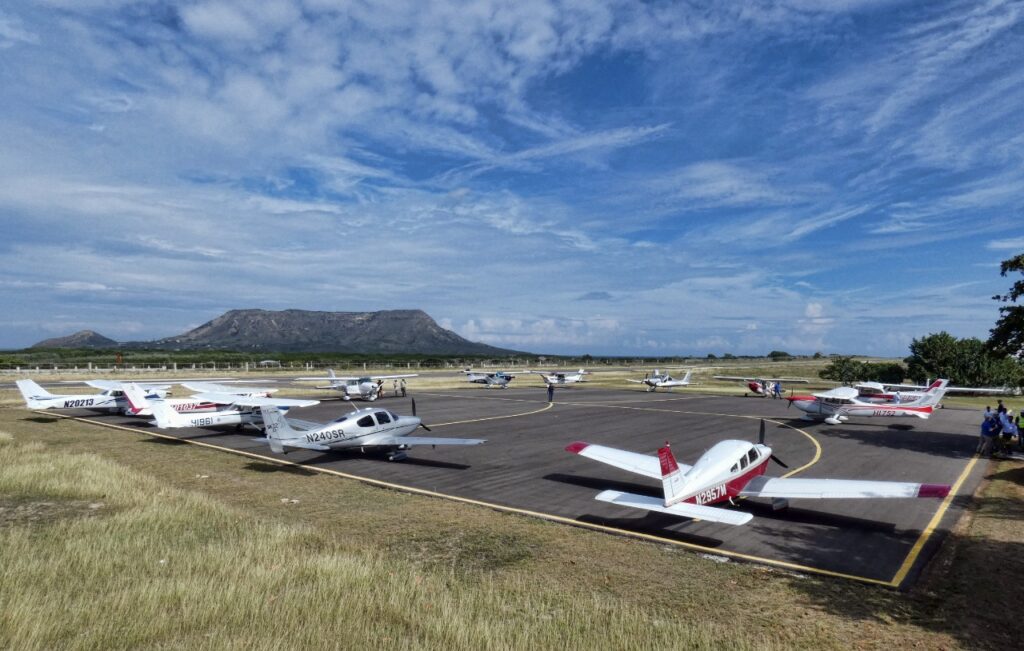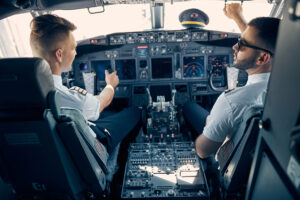It is common for Dominicans to hear that our country has a privileged geographic position; this is especially true in the aviation sector, particularly for small general aviation aircraft. We are situated at the center of air routes connecting north to south, surrounded by beaches and turquoise waters that attract tourists flying small aircraft. We have a dynamic general aviation sector that contributes to both the economy and society. However, there are still challenges we must overcome to properly develop the sector.
Civil aviation is divided into two main types of air operations: airline transportation (highly regulated by states) and general aviation, which includes all other civil aviation operations (both private and commercial) operating under a different regulatory framework than airlines. Unlike the extensive list of regulations governing airline operations, general aviation regulation is based on a spirit of freedom, designed for those who fly for pleasure or business. Since the invention of the airplane, general aviation has played a key role in the development of the aviation industry and remains the most dynamic segment of international civil aviation today. Airplanes, helicopters, balloons, airships, ultralights, drones, and all other flying apparatuses on the planet fall under the classification of general aviation.
Similarly, its impact on the country’s economic development is significant. Services such as air ambulances, agricultural spraying, flight instruction, and local tourism are tangible examples of this dynamism. In agricultural production, for example, crop duster planes are essential for controlling pests in large planting fields. Crops such as rice would suffer multimillion-dollar losses each year without this valuable aerial tool. Likewise, drones are now used to measure and segment crops and farmland dedicated to agricultural activities.
Agricultural spraying is concentrated almost entirely in the Cibao Valley and is currently represented by four companies operating a total of 25 aircraft. These operations are responsible for spraying over 800,000 tareas (a Dominican land unit) nationwide, with rice being the most dependent on this sector. However, in addition to rice, these crop-dusting aircraft also spray cassava, bananas, and sugarcane—products of great importance for national economic stability and food security.
Flight instruction is one of the most strategic aspects of general aviation since it ensures a steady supply of pilots for the growing national airline industry. The country has a diverse flight training operation spread across the national territory. In the tourism sector, general aviation is often the first to establish an air destination in the country. Small airplanes and helicopters are frequently the first to reach remote areas, which later become popular and develop into major tourist hubs. Examples of this include Las Terrenas and Punta Cana, both of which started their tourism growth with small airfields visited by local pilots.
General aviation also has a significant social impact in the country, fostering professions such as airline pilots, aviation mechanics, flight dispatchers, aeronautical meteorologists, and airport administrators, many of whom start their careers in this sector. Additionally, social services like air ambulances, search and rescue operations, medical and vaccine transport (crucial during the COVID-19 pandemic), and aerial firefighting surveillance contribute greatly to Dominican society.
In a milestone for national aviation, the Dominican Republic Air Force began assembling DULUS TP-75 aircraft in 2024, creating the country’s first airplane assembly line and paving the way for possible aircraft manufacturing and certification in the near future. Although this initiative originates from military aviation, it benefits the entire national aviation sector by enhancing the specialization of aeronautical personnel working on the project.
In the Dominican Republic, general aviation faces major challenges, including the high cost of fuel, expensive aircraft insurance, a lack of regulations in the airport security law, a shortage of hangars, and outdated licensing examinations. The hangar issue, for example, was identified during negotiations for the new agreement with Aerodom as one of the most pressing needs at Joaquín Balaguer International Airport in Higüero. However, we believe the lack of hangars is a nationwide problem.
Regarding fuel, this issue is also a strategic concern for the country: of the 15 Dominican airports, only nine have fueling stations, making operational exploitation and emergency use of the other airports more difficult. Furthermore, at the airports that do have fuel, there is only one fuel provider available to users. This means that six airports have no fuel access, and in the others, there is no direct competition, leading to potential shortages that could impact overall airport operations.
To address these challenges, a group of pilots and general aviation users decided to establish the Dominican General Aviation Association (ADAG), whose mission is to provide solutions for the sector and represent its users. Among the proposals we have presented are the construction of autonomous fueling stations and hangars in all airports across the country, the creation of regulations mandated by the airport security law, and the standardization of access procedures.
General aviation is a pillar of the country’s aeronautical and socioeconomic development. We must work to ensure its continued progress and lay the foundation for its future growth. The government must play a key role in fostering this development and collaborate with civil society organizations dedicated to advancing the sector.





